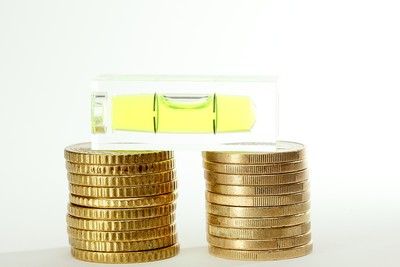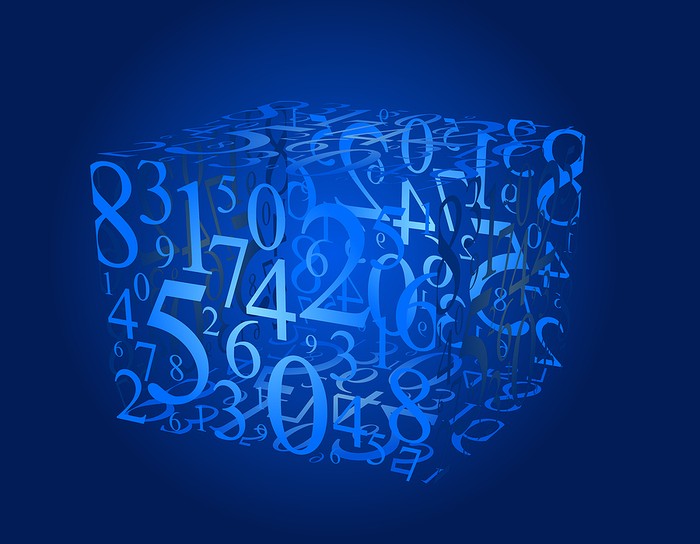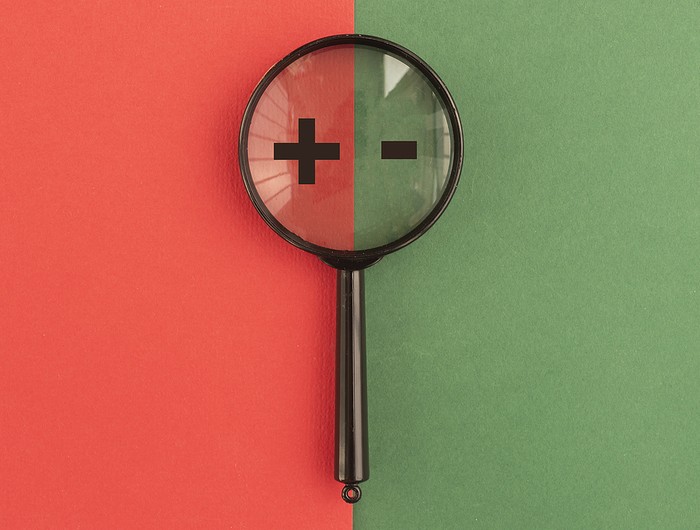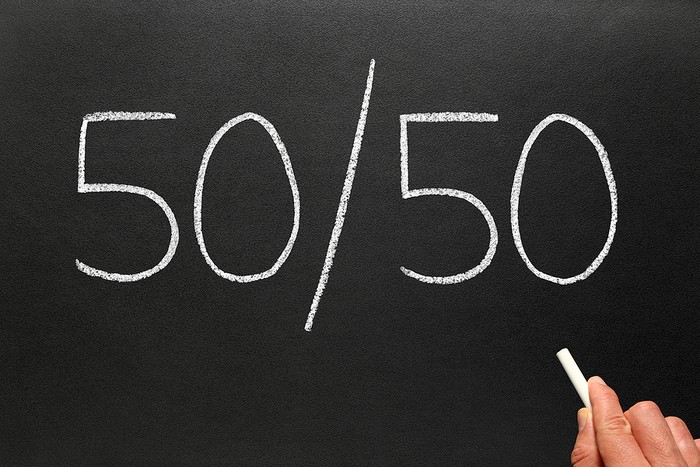 There is so much jargon and specialist terminology in betting that anyone new to it could be forgiven for being rather confused at times. Certain terms refer to specific bet types (such as the Lucky 15 or the Super Heinz) or they refer to a runner’s chances in a horse race (such as a nap or a banker) while others still refer to the odds offered by bookmakers (with terms such as cockle, carpet or bottle representing odds of 10/1, 3/1 and 2/1 respectively). In this article, we’ll focus on one of the most common terms relating to odds: evens.
There is so much jargon and specialist terminology in betting that anyone new to it could be forgiven for being rather confused at times. Certain terms refer to specific bet types (such as the Lucky 15 or the Super Heinz) or they refer to a runner’s chances in a horse race (such as a nap or a banker) while others still refer to the odds offered by bookmakers (with terms such as cockle, carpet or bottle representing odds of 10/1, 3/1 and 2/1 respectively). In this article, we’ll focus on one of the most common terms relating to odds: evens.
Often written as EVS, Evs or 1/1 and also referred to as even money, evens is a very simple concept: if you place a bet at evens and it wins, your win will be equal to your stake. So, for example, if you place a £10 bet on a horse that is priced at odds of evens, if that horse wins, you will be paid a net win of £10 (for a total return of £20, i.e. the amount from the winning bet plus your initial stake).
Odds of evens implies the outcome in question has a 50% chance of occurring, which is the same as you would get in the long term with the toss of a fair coin. Of course, odds offered by bookmakers do not represent the actual probability of an event occurring (or the bookie’s best guess at the probability), but we will explain this in more detail later in the article. First, we’ll explain how evens will be displayed in various odds formats.
Different Odds Formats For Evens

There are various formats for presenting betting odds and here we will briefly explain the main three you are likely to encounter at UK betting sites.
Fractional Odds
Traditionally in the UK, fractional odds have been favoured by bookies and punters alike. These are written – as the name suggests – as a fraction and includes things like 5/1, 10/3, 4/5 and 100/1, among numerous others. Interestingly, when it comes to even money, it is rarely written as 1/1 and instead is usually written as Evens or shortened to Evs.
Decimal Odds
With the growth of betting exchanges in recent times, decimal odds have become more popular in the UK. In many ways, decimal odds are less confusing than fractional odds once you understand the basics. The odds are presented as a number greater than 1.00 and this number represents the total return you would receive should your bet win. So if you place a bet at decimal odds of 4.0, your total return would be four times your initial stake.
In decimal odds, evens is written as 2.0. Anything below 2.0 is described as being odds on, anything above 2.0 is odds against (see below for more about odds on and odds against bets). In order to convert fractional odds to decimal odds, you simply divide the numerator (top or left-hand number) by the denominator (bottom or righthand number) and then add one. For example, converting 7/2 to decimal odds would be: (7 ÷ 2) + 1 = 4.5. Converting evens to decimal would be simply (1 ÷ 1) + 1 = 2.0.
American Odds
American odds are less common in the UK (surprise surprise!) but many bookies offer this option none the less. They are slightly less intuitive than the previous two formats for many, but they are still relatively easy to understand. The odds are written as a number with a + or – symbol, and in the case of the former this number represents the amount you would win from a $100 bet (or currency equivalent). Note that the winnings the number represents include the win from the bet only rather than the total returns (win and initial stake) that is indicated by decimal odds.
So, for example, American odds of +900 would represent winnings of $900 from a $100 bet (or £900 from a £100 bet, if you prefer). This is the equivalent of 9/1 in fractional odds. When written in American odds format, even money is written as +100, i.e. you would get a win of $100 (or currency equivalent) from a $100 bet.
Things are slightly more complicated when American odds are displayed with a minus sign, as here it gives the amount of cash you would need to stake to win $100 (or currency equivalent). So -400 in American odds would mean you’d need to bet $400 to win $100, thus this is the equivalent of 1/4 in fractional odds. In other words, American odds with a minus sign represent a bet that is odds on (see below for more on that).
What Does Odds On And Odds Against Mean?

In simple terms, a bet that is odds on is one that has odds that are less than evens; conversely, and predictably, if a bet is odds against, the odds will always be greater than evens. When written as fractional odds, the fraction will be less than 1/1 for bets that are odds on and greater than 1/1 for bets that are odds against. As mentioned, when written in the decimal odds format, odds-on bets are less than 2.0 (but always greater than 1.0), whereas bets that are odds against will be greater than 2.0. In American odds, odds-on bets are written with a minus sign, whereas odds against bets are written as +100 or above.
If you think of betting odds as a set of old-fashioned weighing scales, you could envisage even money as being the point at which the scales are balanced. That is to say, if your bet wins, the winnings will be equal to the stake you placed (and the total returns will be twice your initial stake). Both odds on and odds against will skew the scales, in our analogy, one way or the other.
So, looking first at odds against, the scales will be tipped past evens so that the return you get from a winning bet will be greater than your initial stake. With odds on, in contrast, the return you gain from a winning bet will be less than your initial stake (though of course, if your bet wins you will get your initial stake back as well, so you will still be up overall).
Let’s take a look at some examples of different odds to put things in context:
| Fractional Odds | Decimal Odds | Odds On Or Against? | Returns From A £10 Bet |
|---|---|---|---|
| 1/100 | 1.01 | Odds On | £10.10 |
| 1/10 | 1.1 | Odds On | £11 |
| 2/5 | 1.4 | Odds On | £14 |
| 5/6 | 1.83 | Odds On | £18.30 |
| 10/11 | 1.91 | Odds On | £19.10 |
| 1/1 | 2.0 | N/A | £20 |
| 7/4 | 2.75 | Odds Against | £27.50 |
| 3/1 | 4 | Odds Against | £40 |
| 10/1 | 11 | Odds Against | £110 |
| 100/1 | 101 | Odds Against | £1000 |
| 1000/1 | 1001 | Odds Against | £10000 |
More can be found on what odds on means here.
Why Odds Are NOT The Same As Probability

Inexperienced punters who find a bet with odds of evens (2.0) might assume that the bet has a 50% chance of winning. This is because the implied probability of even money is indeed 50%. But to assume that fails to take into account the margin the bookie will add to any bet to ensure they always – in the long term – come out on top.
Bookies do not hide the fact they add margins as they are businesses after all. But for whatever reason, some people may think the odds bookmakers offer are representative of the actual probability of a given event occurring. It could be said that they are indeed indicative of the probability, but with a bit extra on top. With most events on which people can bet, there is very little chance of knowing the true probability of that event occurring (and hence it is difficult to ascertain how close the probability implied by the bookies’ odds is to the actual probability. But there is one event on which people can bet that can be assessed against a known probability: the toss of a coin.
Bookies will happily take bets from customers on which side will win the coin toss ahead of a game of cricket. As anyone who remembers studying basic probability at school will no doubt recall, when flipping a coin the probability you will get heads landing up will be 50% and, equally, the probability you will get tails landing up will also be 50%. (This assumes a fair, unweighted coin that hasn’t been tampered with by some unscrupulous trickster.)
So if the odds on England winning the toss in their Ashes match against Australia truly reflected the probability of the toss of a coin, the odds would be evens for England to win the toss and evens for Australia to win the toss. Instead, most bookies will offer odds of 10/11 on England and the same on Australia (or often less). Such a price has an implied probability of 52.38% (as opposed to the 50% probability that would be implied by a price of evens), thus on the whole market the overround, as the bookies’ margin is called, is a total of 4.76%, a nice enough return for them.
As mentioned, trying to assess the actual probability of an event is extremely difficult (other than with things like the toss of a coin). This is because with something like a football match or a horse race there are so many variables as to make it almost impossible to take them all into account in any meaningful way, or certainly a way that can ever be said to be 100% accurate.
Having said that, if you are able to delve into the statistics in an effective manner, you might find a way to assign a probability to a certain event in which you have confidence. If you think an event has a probability of occurring that is greater than 50% and the bookie is offering odds of evens, you have yourself a value bet on your hands and you could have an opportunity to beat the bookie. But even value bets fail, of course, and there are no foolproof ways of getting the better of the bookies, even if you do put the hours in pouring over stats.
Even Money Bets In Accumulators
Just a final note here to say that while a winning even money bet will give you a win that is equal to your stake, if you combine a number of even money bets in an accumulator, your winnings would be dramatically more impressive. Here we will show the potential winnings from a £10 accumulator that includes only bets priced at odds of evens:
| Accumuator | Returns from a £10 bet (including stake) |
|---|---|
| Double | £40 |
| Treble | £80 |
| Four-fold | £160 |
| Five-fold | £320 |
| Six-fold | £640 |
| Seven-fold | £1,280 |
| Eight-fold | £2,560 |
As you can see, combining several even money bets can give you the chance to win handsome amounts of cash. But of course with each additional selection, the chances of your bet coming in diminishes and it only takes one loser to blow the whole bet.
